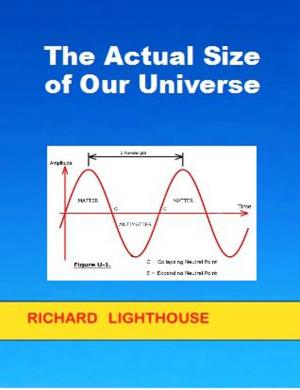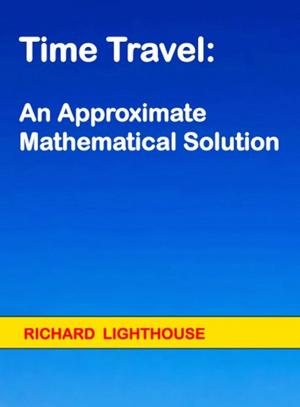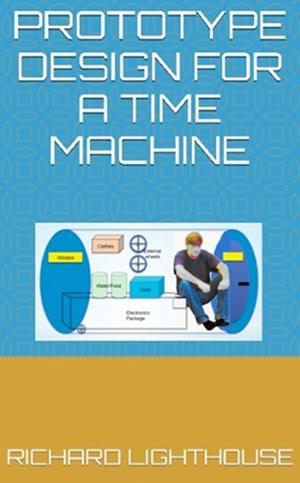Technology Solution for Global Hunger
Nonfiction, Science & Nature, Science, Physics, Time, Technology, Agriculture & Animal Husbandry| Author: | Richard Lighthouse | ISBN: | 9781370925100 |
| Publisher: | Richard Lighthouse | Publication: | February 25, 2017 |
| Imprint: | Smashwords Edition | Language: | English |
| Author: | Richard Lighthouse |
| ISBN: | 9781370925100 |
| Publisher: | Richard Lighthouse |
| Publication: | February 25, 2017 |
| Imprint: | Smashwords Edition |
| Language: | English |
Revision 1C- This ebook has passed the epub check numerous times, yet it continues to be blocked from premium distribution. This short technical paper presents a technology with the potential to solve global hunger. A Synthetic Food Production facility is described which can provide daily food supplies for thousands of people at extremely low cost. Using the representative example, and 5 to 10 people operating the facility, it is possible to provide up to 10,000 ears (about 200 bushels) of sweet corn per day. Basically, the process converts electricity into instant food. The math for time travel or time-forwarding has been previously explained by this author and this math has been confirmed by two university professors. It is possible to use time-forwarding to rapidly grow all kinds of vegetables and fruits. Basically, a corn seed and a mature stalk of corn are the same thing, but exist at different times in our terms. Time-forwarding technology allows the seed to be instantly converted into a mature stalk of corn. Technically, we could call it Newtonian Superposition, which is a summation of forces. But, if you prefer 'time travel' for vegetables, that works just as well. This discussion is about the economics of food production. The typical American spends $151 per week on food. This compares with a large-scale synthetic food production facility that will make it possible to provide nearly unlimited vegetables and fruits at less than 1 cent per person per day. This is extraordinary. The facility is minimally self-sustaining, and could be utilized for a wide variety of vegetables and fruits – it also produces new seeds for the next crop generation. The process can also be adapted for use on Mars, or any planet with sunlight and a source of water. An example is provided using ordinary sweet corn, but this same process can be used to produce a variety of fruits and vegetables. Each reader must comprehend that our universe literally blinks, off and on, approximately 1 trillion times every second (1.1 THz). By using this blinking frequency, it is possible to travel through time, sending objects or seeds forward in time, in less than one second.
Revision 1C- This ebook has passed the epub check numerous times, yet it continues to be blocked from premium distribution. This short technical paper presents a technology with the potential to solve global hunger. A Synthetic Food Production facility is described which can provide daily food supplies for thousands of people at extremely low cost. Using the representative example, and 5 to 10 people operating the facility, it is possible to provide up to 10,000 ears (about 200 bushels) of sweet corn per day. Basically, the process converts electricity into instant food. The math for time travel or time-forwarding has been previously explained by this author and this math has been confirmed by two university professors. It is possible to use time-forwarding to rapidly grow all kinds of vegetables and fruits. Basically, a corn seed and a mature stalk of corn are the same thing, but exist at different times in our terms. Time-forwarding technology allows the seed to be instantly converted into a mature stalk of corn. Technically, we could call it Newtonian Superposition, which is a summation of forces. But, if you prefer 'time travel' for vegetables, that works just as well. This discussion is about the economics of food production. The typical American spends $151 per week on food. This compares with a large-scale synthetic food production facility that will make it possible to provide nearly unlimited vegetables and fruits at less than 1 cent per person per day. This is extraordinary. The facility is minimally self-sustaining, and could be utilized for a wide variety of vegetables and fruits – it also produces new seeds for the next crop generation. The process can also be adapted for use on Mars, or any planet with sunlight and a source of water. An example is provided using ordinary sweet corn, but this same process can be used to produce a variety of fruits and vegetables. Each reader must comprehend that our universe literally blinks, off and on, approximately 1 trillion times every second (1.1 THz). By using this blinking frequency, it is possible to travel through time, sending objects or seeds forward in time, in less than one second.















